
Hope for a huge, ancient and imperilled fish
First Nations are leading efforts to make sure lake sturgeon can find a home in...
Frederick Olsen Junior does not mince words when describing a joint B.C.-Alaska government report on water quality in rivers that originate in northwest B.C. and flow into Southeast Alaska.
“Smoke and mirrors. Lip service. Box-checking,” said Olsen, who is executive director of the Southeast Alaska Indigenous Transboundary Commission, a consortium of 15 tribal nations dedicated to protecting rivers.
The governments of B.C. and Alaska formed a bilateral working group four years ago, after decades of concerns about the effects of runoff from working and abandoned B.C. mines in the Stikine, Taku and Unuk watersheds. The group includes representatives from government agencies, Indigenous nations and industry. For two years, the group sampled and studied water, sediment, fish and other aquatic life from the three rivers to come up with baseline data and figure out whether or not the rivers and aquatic life are at risk.
The group’s final report, released on Feb. 25, concluded that the rivers “continue to support and sustain aquatic life in conjunction with mining and other land use activities.” It also found that although some water samples in B.C. exceeded provincial water quality guidelines, samples downstream of the B.C.-Alaska border did not exceed Alaska water quality standards.
But critics question the findings and say the group failed to adequately engage Indigenous and community groups.
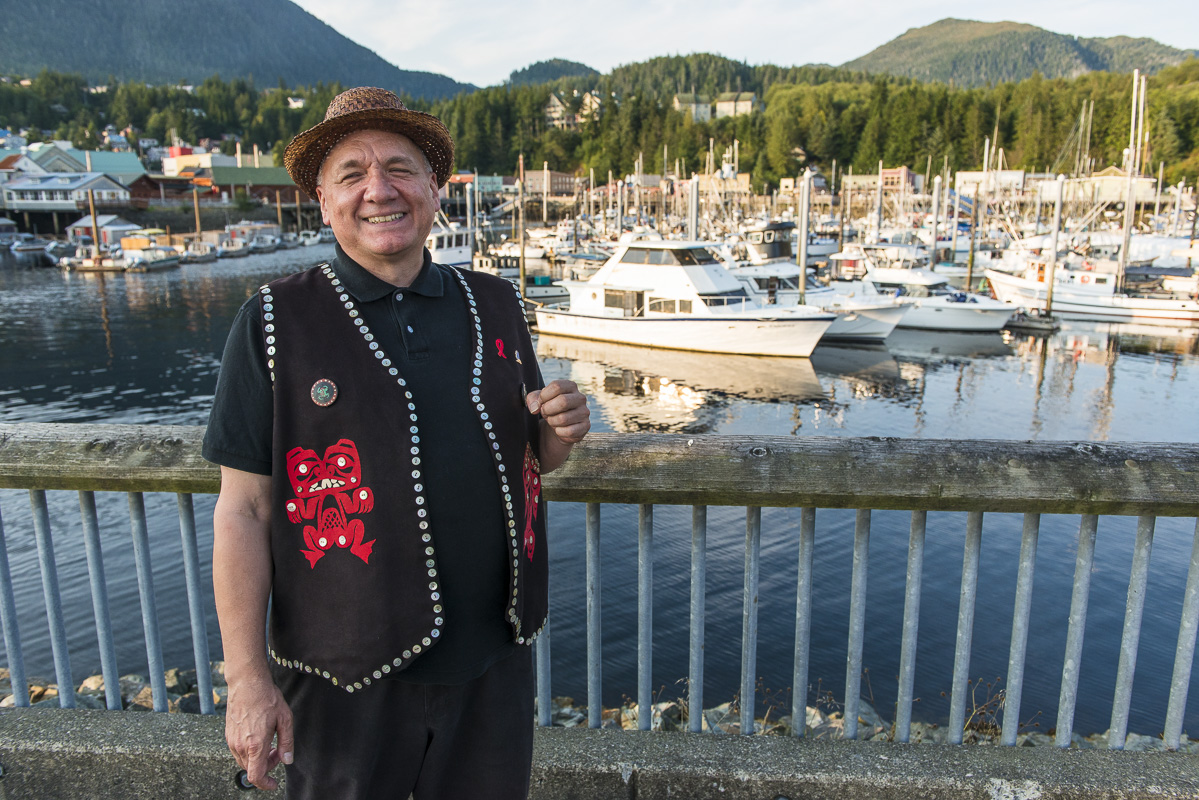
Frederick Olsen Junior, executive director of the Southeast Alaska Indigenous Transboundary Commission, is disappointed by the new B.C.-Alaska report on the impact of B.C. mines on transboundary watersheds. Photo: Garth Lenz / The Narwhal
Jill Weitz, director of Salmon Beyond Borders, which has spearheaded campaigns to protect the transboundary watersheds, said groups fighting to protect Alaska rivers do not believe the report accurately reflects what is happening in the rivers or the extent of community involvement.
“We have all agreed that it is a misrepresentation, not only of the public engagement and involvement of the state with Alaskans and the tribes, but a misrepresentation of the risk and potential risk and concerns around development in these watersheds,” Weitz said.
Critics are also concerned that the joint monitoring program is wrapping up.
“It clearly identifies a notion that the State of Alaska and B.C. are not interested in developing a long-term management strategy for these transboundary watersheds,” Weitz said.
A news release from the province says there are other sampling programs planned by provincial, state and federal agencies, so there is no need for the joint monitoring program. However, the release said Alaska and B.C. will continue to work on protection of the shared waterways.
“Water and wildlife don’t recognize borders and so it’s up to all of us to protect our critical and priceless watersheds, regardless of jurisdiction,” B.C. Environment Minister George Heyman said in the news release.
In December, the U.S. Congress, led by the Alaska Congressional Delegation, allocated US$3.62 million to the U.S. Geological Survey to continue baseline monitoring at the international border.
The Stikine, Taku and Unuk watersheds are prime salmon habitats, but populations in the Taku and Stikine are struggling and there have long been concerns about the potential adverse effects on them from mines. These concerns have been heightened by the 2014 Mount Polley mine disaster, which sent 24 million cubic metres of mine waste into nearby waterways after the tailings pond dam collapsed, and the six decades of inaction on cleaning up the Tulsequah Chief mine, which leaches acid waste into a tributary of the Taku.
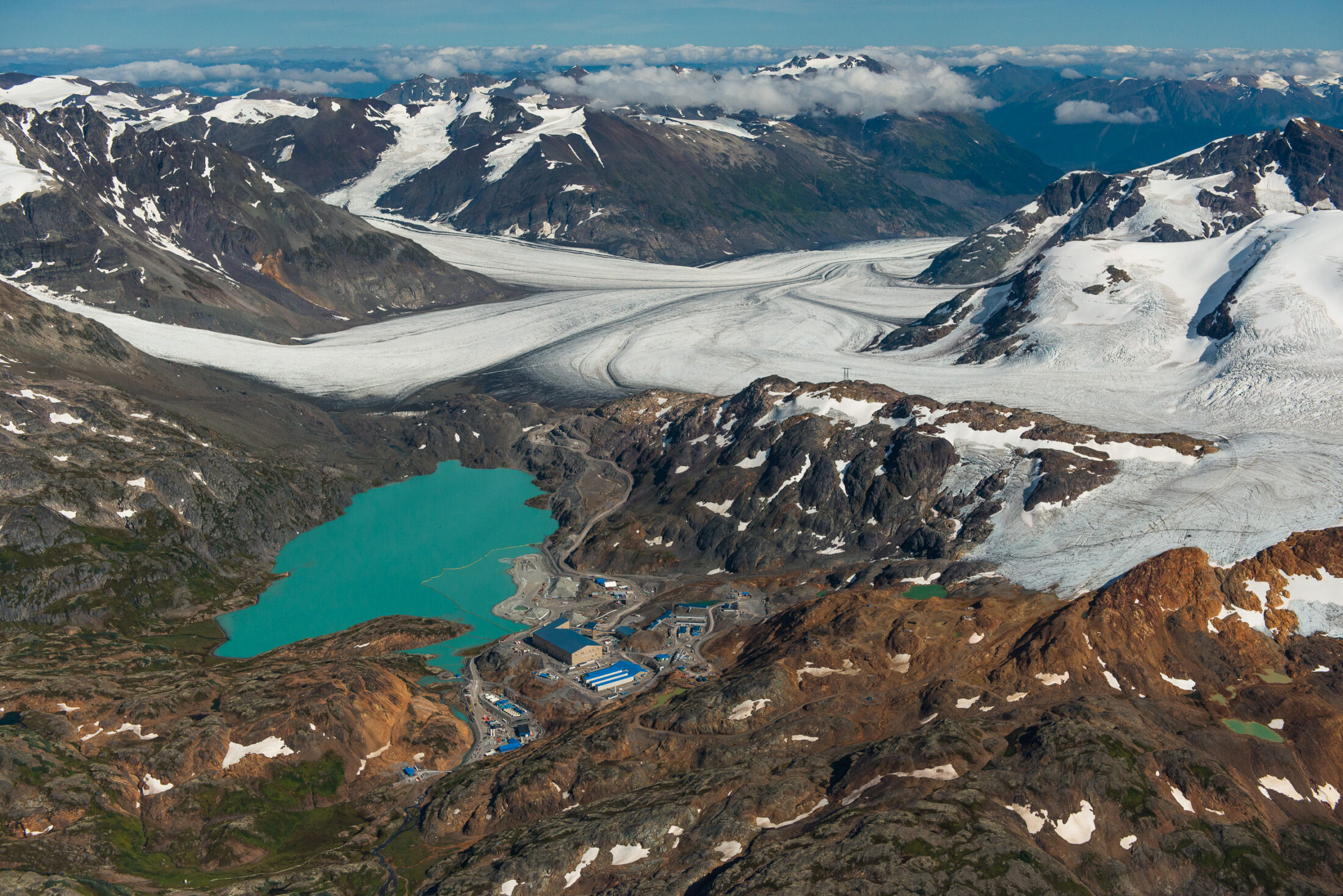
Alaska environmental groups and tribes are concerned that B.C. mines such as Brucejack, shown here, are having negative impacts on their water that were not captured in a new B.C.-Alaska government report. Photo: Garth Lenz / The Narwhal
For years, community, environmental and Indigenous groups on both sides of the border have been urging B.C. to clean up its act, tighten mining regulations and permitting requirements, demand adequate site cleanup securities from companies and bring in financial assurances to cover disasters. In 2019, in an unprecedented bipartisan move, eight U.S. senators pressed B.C. to take action. A letter from the senators highlighted the need for B.C. to improve mining safeguards and urged Premier John Horgan to recognize that contamination from upstream mines threatens Alaska businesses and resources.
Last year, an international group of 22 scientists and policy experts published a commentary in the journal Science urging both governments to address potential damages caused by pollution from B.C. mines flowing into the U.S.
The B.C. government has finally pledged to clean up the abandoned Tulsequah Chief and has committed almost $1.6 million for immediately needed work and additional studies. But B.C.’s mining sector is booming and Alaska environmental groups and tribes are concerned that, in addition to already approved or operating mines such as KSM, Brucejack and Red Chris, other major proposed projects, such as Galore Creek and Schaft Creek, are wending their way through the process and B.C.’s regulations will not protect Alaska waters.
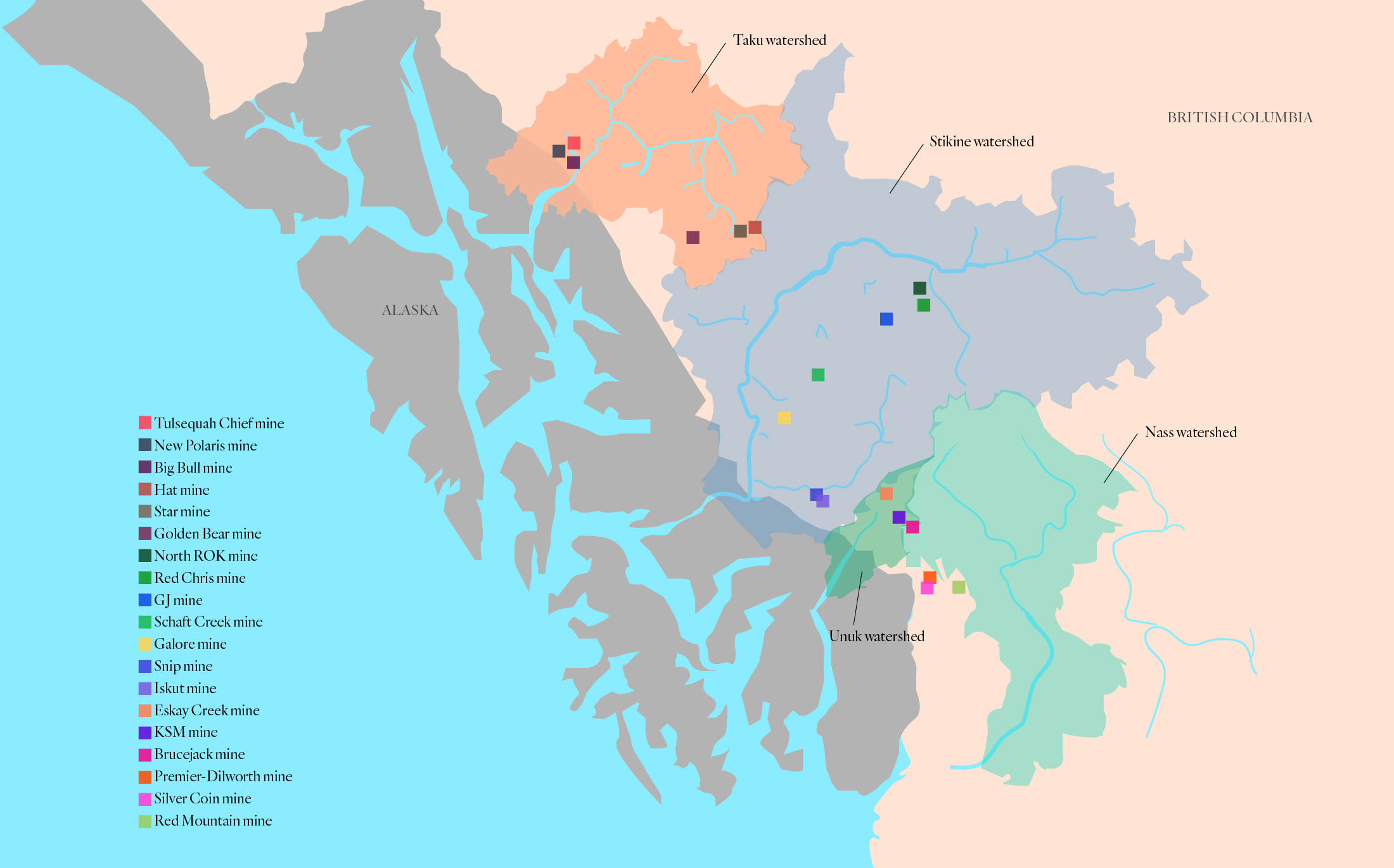
The Stikine, Taku and Unuk watersheds, which are shared by B.C. and Alaska, are home to several mines at various lifecycle stages. Map: Carol Linnitt / The Narwhal
There is still no way for Alaskans to deal with problems originating from B.C. mines, said Chris Zimmer, Alaska campaign director with Rivers Without Borders.
“We still don’t have financial assurances to compensate Alaskans, there is still not a great transboundary plan to deal with problems,” he said. “It’s one thing to find out what is in the water, it’s a completely other thing to be able to clean it up and fix it.”
Over the past decade, government agencies and First Nations on both sides of the border have set up monitoring systems, but they recognized there was a need to establish baseline data against which to measure future impacts.
Jason Brune, Commissioner of the Alaska Department of Environmental Conservation, said the baseline data is incredibly important.
“The data has not shown a measurable impact to Alaskan waters from historical mining activities in B.C. and will serve as a foundation to assess potential impacts from future industrial activity as well,” he said in the news release.
The joint monitoring program included habitat assessments, physical and chemical analyses of water and sediment and analyses of resident fish species from each watershed — although the report notes that there was no way to determine how long each fish had spent at the capture site.
The sampling took place between August 2017 and September 2019. In B.C., there were 23 sampling sites. In Alaska, up to five sites in each watershed were randomly selected for sampling and up to an additional six sites were chosen in priority areas.
Researchers found some sites in B.C had elevated concentrations of cadmium, copper, selenium and zinc in the water and some exceeded provincial guidelines, but the elements were found above and below mine sites, likely reflecting natural concentrations, according to the report. No exceedances of Alaska Water Quality Standards were found downstream of the B.C.-Alaska border.
Sediment samples from all three watersheds found sites with higher concentrations of arsenic, copper and nickel than set out in guidelines for aquatic life on both sides of the border. Concentrations were higher in sediment samples in tributaries than the main stem of rivers, with sediment from the Unuk watershed showing the highest concentrations. Again, the exceedances were found above and below mine sites.
The report said naturally occurring mineral deposits in the watershed likely influence water and sediment quality, but, in the Taku watershed, concentrations are affected by discharges from the Tulsequah Chief.
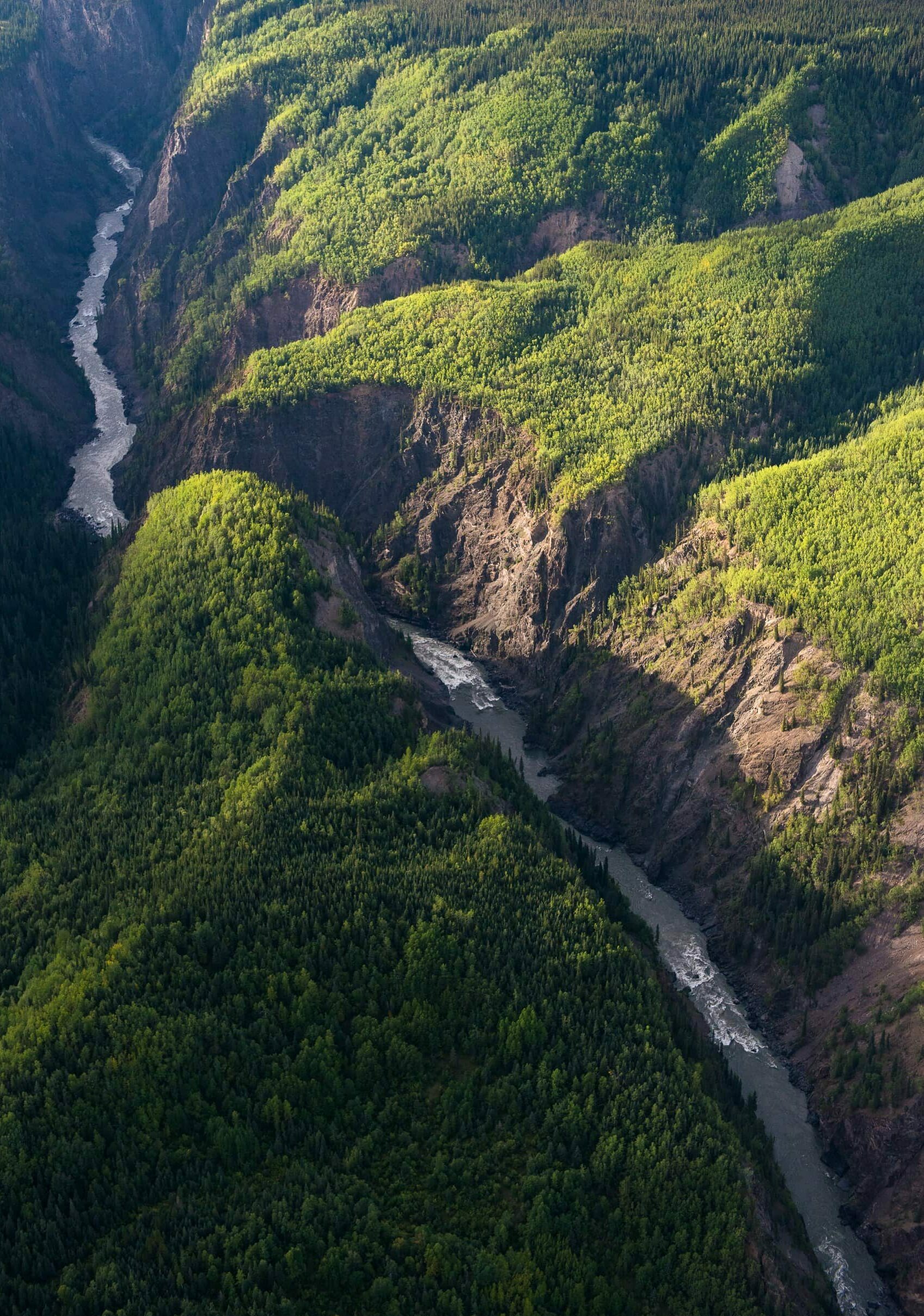
The Grand Canyon of the Stikine River is downstream from the Red Chris mine and could be affected in the event of a tailings dam failure. Photo: Garth Lenz / The Narwhal
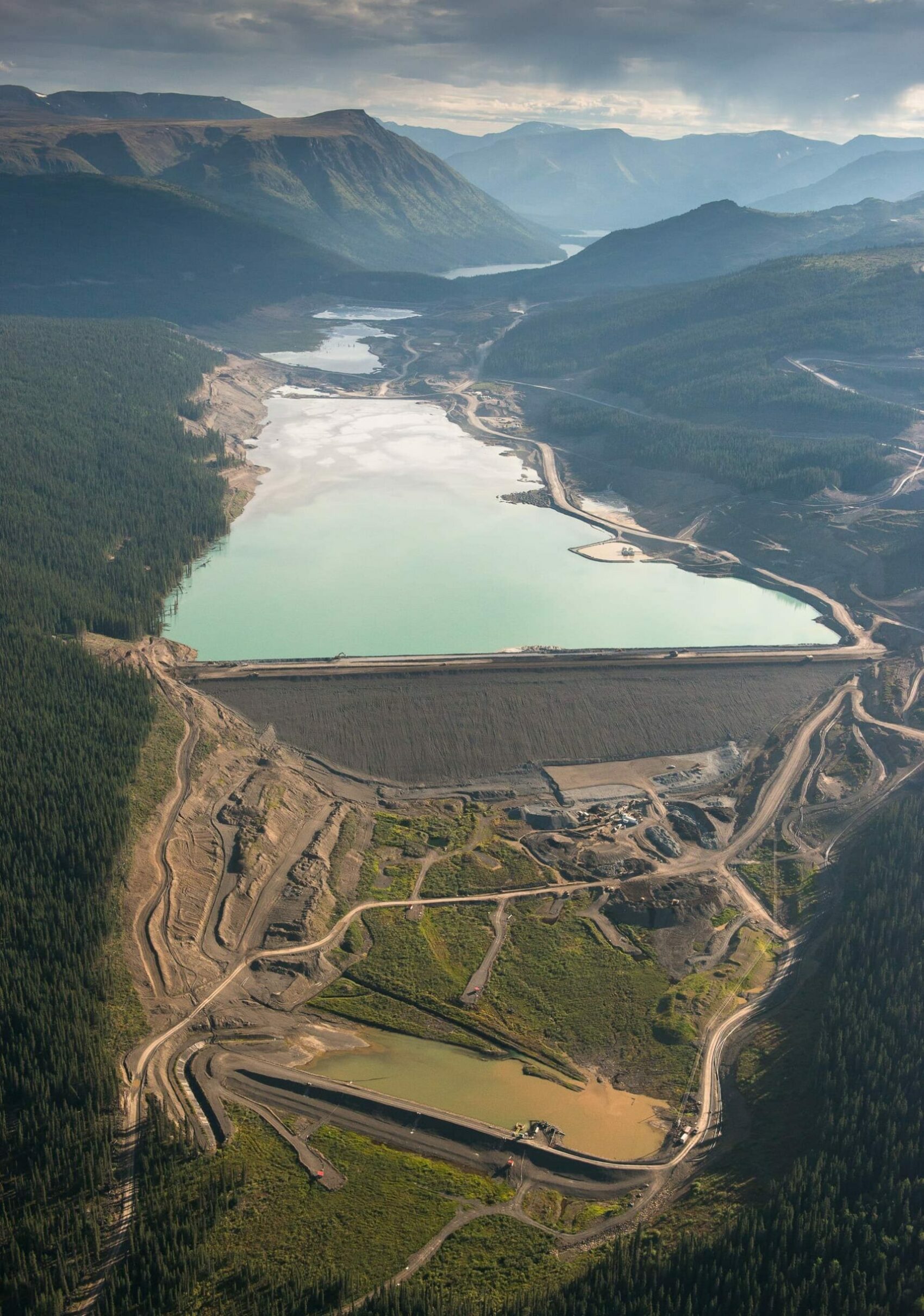
Alaskans are worried that contaminants from mine tailings ponds in B.C., like this one at Red Chris mine, could make their way into their water. Photo: Garth Lenz / The Narwhal
Tests on fish produced mixed results. For example, the report flagged copper concentrations in Alaska sculpin in the Stikine watershed, but found element concentrations in Dolly Varden char were lower in Alaska than B.C on the Unuk river.
The report notes that, because of the size, diversity and complexity of the watersheds, more focused sampling programs are needed to establish what is impacting water quality and aquatic species.
Christopher Sergeant, a research scientist with the University of Montana’s Flathead Lake Biological Station, reviewed an early draft of the report and had concerns about how data was being collected.
“Monitoring efforts tend to be concentrated in small areas of each watershed or relatively short-term in effort,” he wrote in a brief.
Sergeant said the bilateral report is an important effort, but misses the mark as far as setting up a baseline of water, fish and sediment health.
“It’s just a start,” he told The Narwhal. “Measuring one spot a couple of times over one or two years does not create a baseline, especially in these rivers where climate change is making glaciers recede. There’s more rain falling and changing all the natural patterns of these rivers and that’s happening at the same time as potential mining impacts.”
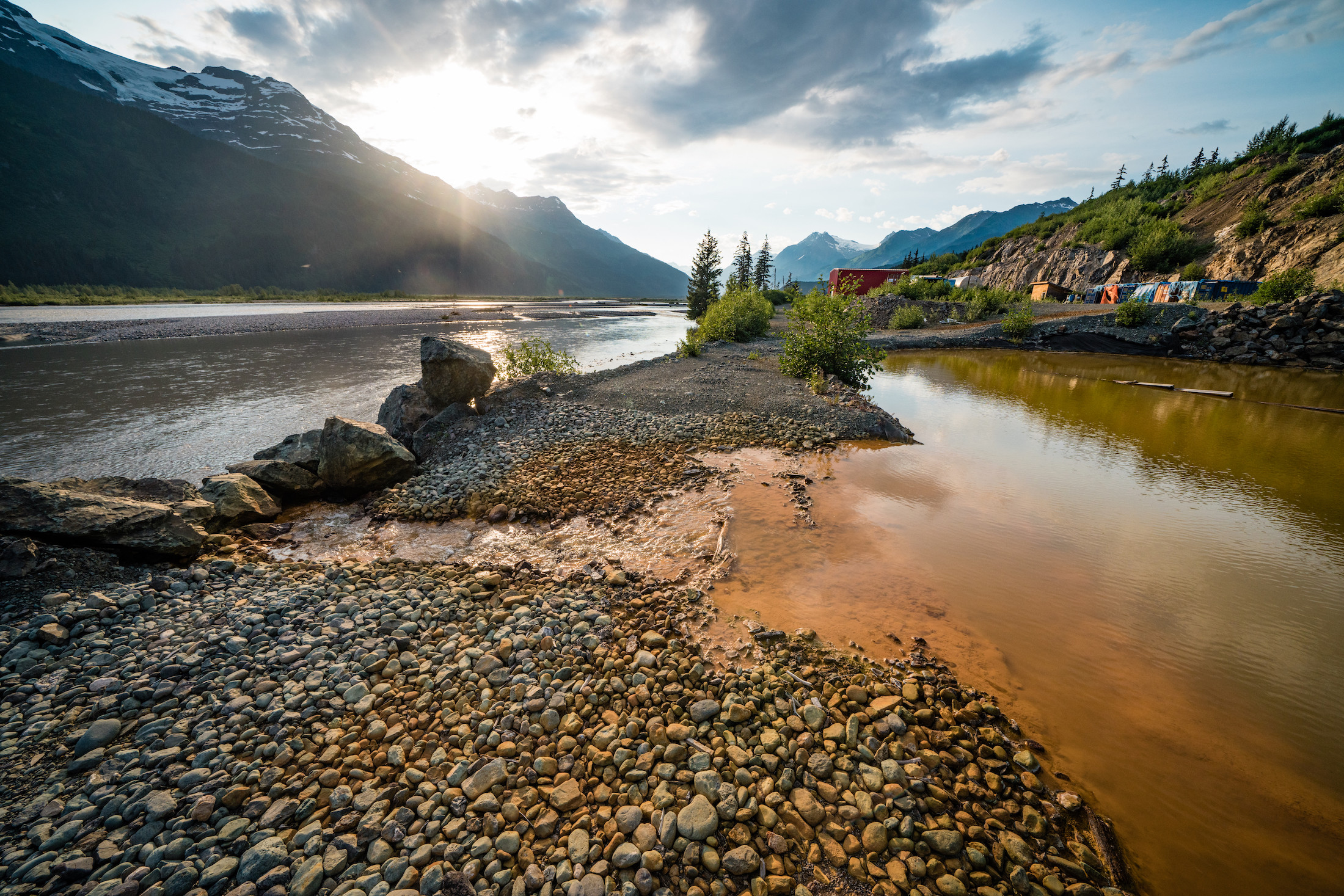
The Tulsequah Chief mine has been leaking contaminated water into a salmon watershed on the B.C.-Alaska border for over 60 years. Photo: Colin Arisman / The Narwhal
That uncertainty means scientists should be increasing measurements to understand the variability of the rivers, said Sergeant, adding that many of the tests were opportunistic, rather than a true coordinated effort, partially because of the difficulty of working in such remote areas.
Sergeant is also concerned about some of the species chosen for fish tissue samples.
Some species, such as Dolly Varden char, travel between two or three rivers in a day, so samples do not pinpoint where a problem might be occurring.
“I would say that, in some cases, they chose the wrong species,” Sergeant said.
Zimmer told The Narwhal he is concerned the report does not show the effects of the mines on fish in areas such as the Tulsequah River and he is worried it gives the false impression that everything is fine in the watersheds.
“What are the effects of sublethal levels of metals, below the water quality standards, especially with metals such as copper, which is so toxic in such tiny, tiny quantities?” asked Zimmer.
“We know we have got a bunch of crap coming out of the Tulsequah Chief mine — literally tonnes of lead and copper and arsenic — so what’s the effect of that?”
The Central Council of the Tlingit and Haida Indian Tribes of Alaska are among groups who say they have not worked with the bilateral group. The Tlingit and Haida’s Native Lands and Resources Department has been collecting baseline data in the headwaters of several transboundary rivers for five years, but were not asked to submit their data for the report, according to a news release.
Their sampling program has not yet finished, but the council will be releasing some findings from the Taku and Stikine rivers in about a month.
“Our way of life depends upon the health of our transboundary waters and it’s important for Alaska tribes and B.C. First Nations to be fully engaged for true collaboration to exist,” Central Council President Richard Chalyee Eesh Peterson said.
Peterson said the report should not be viewed as the final word and Alaska tribes and B.C. First Nations need to be involved in creating a transboundary water resources management framework.
“No one should say they’ve found no environmental harm and conclude their efforts,” Peterson said. “This is just the beginning.”
Get the inside scoop on The Narwhal’s environment and climate reporting by signing up for our free newsletter. A $335 million funding commitment to fund...
Continue reading
First Nations are leading efforts to make sure lake sturgeon can find a home in...

We’re excited to share that an investigation by The Narwhal is a finalist for the...

A new documentary, Nechako: It Will Be a Big River Again, dives into how two...
